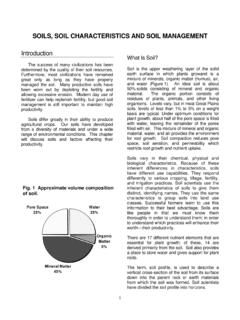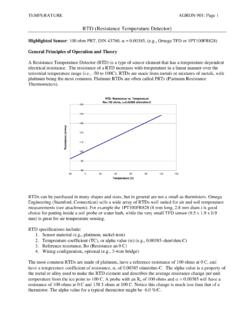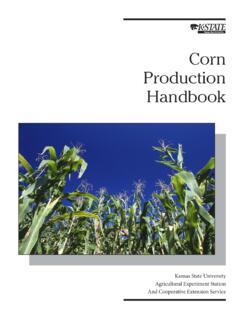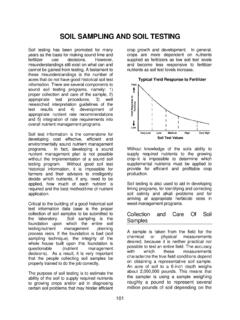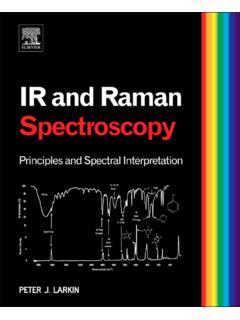Transcription of SOIL NUTRIENTS, SOURCES AND UPTAKE
1 soil NUTRIENTS, SOURCES AND UPTAKE Essential Plant Nutrients All green plants have the ability to manufacture their own food by using energy derived from the sun to combine chemical elements, taken up in the inorganic ion form, into a multitude of organic compounds. Seventeen elements are considered essential for plant growth. If any of these 17 elements are lacking, plants cannot complete their vegetative or reproductive cycles. Some of these nutrients combine to form compounds which compose cells and enzymes.
2 Others must be present in order for certain plant chemical processes to occur. Carbon, hydrogen and oxygen are supplied to the plants through air and water. These three elements comprise about 95% of the total dry matter of most plants. The remaining 5% of the dry matter is made up of 14 essential mineral elements along with many other elements that may be taken up in small amounts by the plants but are not know to perform any essential functions within the plant.
3 When plant growth is limited because of lack of an essential element it is usually due to a deficiency of one or more of these 14 elements. These elements are primarily taken up by plants from the soil solution. The 14 mineral nutrients required for plant growth are classified as primary, secondary, or micronutrients according to the quantity required by plants and/or how widespread deficiencies of the nutrients are Primary nutrients are used in the largest quantities and are usually the first to become deficient in the soil .
4 Primary nutrients and the secondary nutrients are sometimes known as macro nutrients. Secondary nutrients are macronutrients but are less frequently deficient in soils. Micronutrients, also known as trace or minor elements, are required in very small amounts and are less frequently deficient. Even though nutrients are used in different amounts, each of the essential nutrients is equally important for plant growth. The 17 essential plant nutrients are shown below.
5 The chemical symbols are a shorthand method of identifying elements. The student of soil fertility should become familiar with these symbols Source of Plant Nutrients From Air From Water Carbon (C) Hydrogen (H) Oxygen (O) Oxygen (O) Mineral Nutrients From soil Primary Nutrients Secondary Nutrients Micronutrients Nitrogen (N) Calcium (Ca) Boron (B) Manganese (Mn) Phosphorous (P) Magnesium (Mg) Chlorine (Cl) Molybdenum (Mo) Potassium (K) Sulfur (S) Copper (Cu) Zinc (Zn)
6 Iron (Fe) Nickel (Ni) 21 22 Forms Of Nutrients Used By Crops All chemical elements, including plant nutrients exist in nature in an electrically charged form called ions. Ions carry either a positive or negative electrical charge.
7 Ions with positive charges are called cations while those with negative charges are anions. Plants can only utilize nutrients in an ion form although some nutrients are utilized by plants in more than one ionic form. A partial list of common soil cations and anions is shown below. Cation: ( + ) A Positively Charged Ion Anion: ( - ) A Negatively Charged Ion Cations in soil NUTRIENTS Anions in soil K+Potassium NO3-Nitrate NH4+Ammonium SO4-2 Sulfate Mg+2 Magnesium H2PO4- HPO4-2 Phosphate Ca+2 Calcium Cl-Chloride Mn+2 Manganese BO3-2 Borate Zn+2 Zinc MoO3-2 Molybdate NON-NUTRIENTS Na+Sodium OH-Hydroxyl H+Hydrogen* H2CO3-Bicarbonate Al+3 Aluminum CO3-3 Carbonate * Hydrogen as a nutrient is obtained primarily from
8 Water. H+ ions in the soil affect soil pH and many chemical and biological processes. soil organic Matter: A Source Of Plant Nutrients soil organic matter and humus are terms which refer to the partially decomposed residue of plants, animals, and other organisms. organic matter refers to all organic material including fresh crop residues. Humus is the more stable decomposed organic residue. organic matter has long been recognized as having many beneficial effects on physical and chemical properties of the soil .
9 Some of the more important effects of organic matter are : Improves soil Structure. organic matter acts as a bonding agent which holds soil particles together in aggregates. Without organic matter, aggregates are less stable and are easily broken apart. Good soil structure promotes water movement and root penetration while reducing soil crusting, clod formation, and erosion. Contributes to Cation Exchange Capacity (CEC) (see next section).
10 soil organic matter has great ability to attract and hold cations Provides Plant Nutrients. One of the most important attributes of organic matter is its contribution to soil fertility. o Approximately 90% to 98% of the total N and S and 30% to 50% of the P exist in the soil in organic forms. o soil organic matter is approximately 5% N and P or S. o organic matter is also the primary reservoir for available forms of most of the micronutrients. o Potassium is an important exception and does not exist in organic forms.

